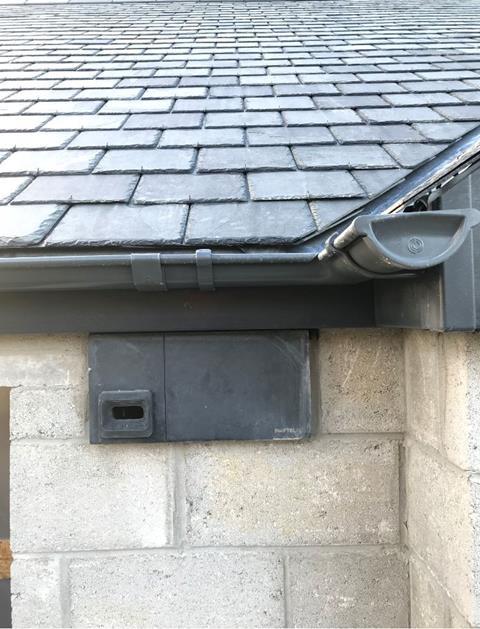Homes for nesting birds to be part of planning policy on all developments above 5m in height
Planning laws passed by Brighton and Hove council will require new developments to contain “swift bricks” to encourage nesting birds.
A minimum of three swift bricks per dwelling will be required to meet the conditions agreed by council members last week.
Shaped like bricks, the nesting boxes (pictured right) can be easily incorporated into new developments and have a small hole for the birds to enter and exit.

The rule will apply to all new developments above 5m in height and is due to be attached to all planning permissions granted after 1 April.
Commercial developments will also be subject to the conditions, which will require one swift brick per 50sqm of floor space.
Swifts often make their nests in the rooftops of buildings after their annual 6,000-mile migration from Africa each spring. But modern building methods have been blamed for reducing suitable nesting sites for the birds, which have declined from 150,000 pairs to 90,000 over the past 20 years.
The nesting facilities, which can also accommodate sparrows, starlings, blue tits and great tits, will join “bee bricks” in Brighton and Hove’s planning laws.

At least one bee brick (pictured left) per dwelling has been required for new developments since November last year, though the bees may not be too pleased with their new neighbours as the birds include bees in their diet.
Councillor Alan Robins congratulated the council’s planning officers, who he said “have come up with a simple scheme that will increase biodiversity and encourage wildlife to thrive in our city”.
And Jack Thompson, conservation officer for the RSPB, which worked with Brighton and Hove council on the new policy, said: “This important planning condition for swifts will help provide more opportunities for nesting swifts and urban birds, supporting important sites, and build on the fantastic work being done to save our swifts.”











No comments yet